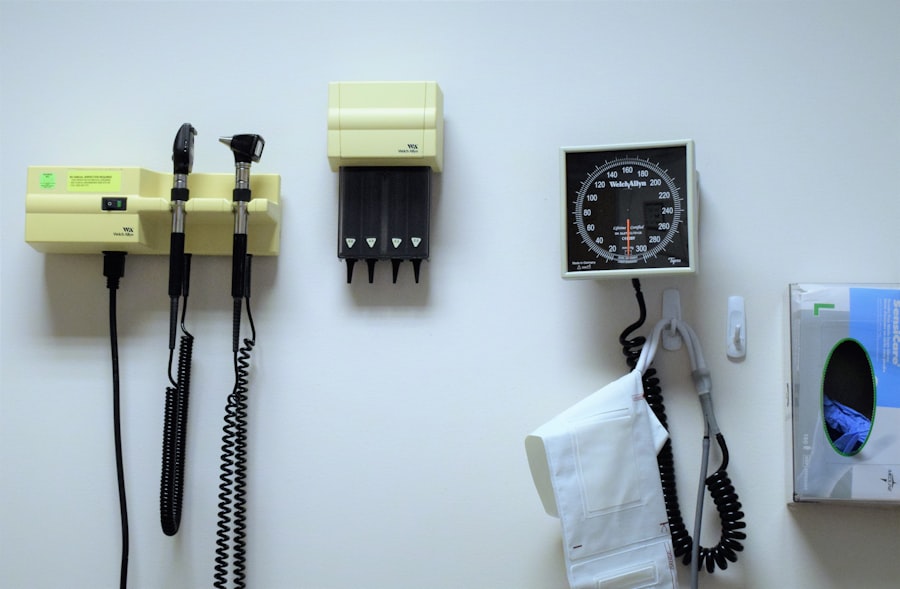World War II was not only a battleground for military forces but also a crucible for medical innovation. As nations grappled with unprecedented levels of injury and illness, the urgency for effective medical solutions led to groundbreaking advancements that would shape the future of healthcare. You may find it fascinating that the war catalyzed developments in various fields, from pharmaceuticals to surgical techniques, all aimed at saving lives and improving the quality of care for wounded soldiers.
The innovations born out of this tumultuous period not only addressed immediate wartime needs but also laid the groundwork for modern medicine. The sheer scale of the conflict necessitated rapid advancements in medical practices. With millions of soldiers injured and countless civilians affected, the medical community was pushed to its limits.
You might be surprised to learn that many of the techniques and treatments developed during this time are still in use today. The war prompted collaboration among scientists, doctors, and military personnel, fostering an environment ripe for innovation. As you delve deeper into this topic, you will uncover how these medical breakthroughs not only transformed wartime care but also had lasting implications for civilian healthcare in the post-war era.
Key Takeaways
- Penicillin revolutionized treatment and saved countless lives during WWII
- Surgical innovations and trauma care advancements improved survival rates for wounded soldiers
- Medical ethics faced significant challenges in the context of war, including the controversial use of human subjects in experiments
- Triage and resource allocation dilemmas forced medical professionals to make difficult ethical decisions
- WWII medical innovations have had a lasting impact on modern medicine, shaping the way we approach treatment and ethical debates
The Development of Penicillin and its Impact on Treatment
One of the most significant medical breakthroughs during World War II was the mass production of penicillin. Discovered by Alexander Fleming in 1928, penicillin’s potential as an antibiotic was not fully realized until the war highlighted the need for effective treatments against bacterial infections. You may find it remarkable that, before penicillin, even minor wounds could lead to life-threatening infections, often resulting in amputations or death.
The impact of penicillin on treatment during WWII was profound. It drastically reduced mortality rates from infected wounds and allowed for more aggressive surgical interventions without the fear of post-operative infections.
As you explore this topic further, you will see how penicillin not only saved countless lives on the battlefield but also revolutionized medicine in civilian settings. The widespread use of antibiotics following the war transformed the approach to treating infections, leading to a significant decline in mortality rates from bacterial diseases. This innovation marked a turning point in medical history, showcasing how necessity can drive scientific progress.
Surgical Innovations and Advances in Trauma Care

In addition to pharmaceutical advancements, World War II also spurred significant innovations in surgical techniques and trauma care. The sheer volume and severity of injuries sustained by soldiers necessitated new approaches to surgery and wound management. You might be intrigued to learn that techniques such as debridement—removing dead or infected tissue—became standard practice during this time, allowing for better healing outcomes.
Surgeons were forced to adapt quickly, often performing complex procedures under less-than-ideal conditions, which led to a rapid evolution of surgical practices. Moreover, the establishment of forward surgical units allowed for immediate care closer to the front lines, significantly improving survival rates for critically injured soldiers. You may appreciate how these innovations not only saved lives during the war but also influenced civilian surgical practices in the years that followed.
The lessons learned from treating battlefield injuries informed advancements in trauma care, leading to improved protocols for managing severe injuries in hospitals worldwide. As you reflect on these developments, consider how they have shaped modern surgical practices and continue to influence trauma care today.
Challenges of Medical Ethics in the Context of War
| Challenges | Description |
|---|---|
| Medical Neutrality | Ensuring medical personnel and facilities are not targeted during war. |
| Informed Consent | Obtaining consent from patients in chaotic and high-stress war environments. |
| Resource Allocation | Deciding how to allocate limited medical resources in war zones. |
| Confidentiality | Protecting patient information in the midst of conflict and surveillance. |
| Professional Integrity | Maintaining ethical standards and not being coerced into unethical practices. |
The medical innovations of World War II were not without ethical dilemmas. As you examine this period, you will encounter complex questions surrounding the responsibilities of medical professionals in wartime settings. The urgency to save lives often clashed with ethical considerations about consent, treatment options, and resource allocation.
You may find it unsettling that the pressures of war sometimes led to decisions that prioritized military objectives over individual patient rights. The ethical challenges faced by medical personnel during WWII were compounded by the chaotic nature of warfare. You might be surprised to learn that many doctors and nurses had to make difficult choices about who received treatment first, often based on factors such as the likelihood of survival or the potential for recovery.
This practice of triage, while necessary in a crisis, raised significant ethical questions about fairness and equity in healthcare. As you delve into these issues, consider how they resonate with contemporary debates about medical ethics in times of crisis.
The Controversial Use of Human Subjects in Medical Experiments
One of the darkest aspects of medical innovation during World War II was the controversial use of human subjects in experiments. You may find it shocking that some medical professionals conducted experiments on prisoners of war and civilians without consent, often under the guise of advancing medical knowledge. These experiments ranged from testing the effects of extreme temperatures to studying infectious diseases, raising profound ethical concerns about human rights and dignity.
The legacy of these experiments has had lasting implications for medical ethics and research practices. You might be interested to know that the atrocities committed during this time led to the establishment of stricter ethical guidelines for conducting research involving human subjects. The Nuremberg Code, developed in response to these events, emphasized the necessity of informed consent and ethical treatment in medical research.
As you reflect on this dark chapter in history, consider how it has shaped contemporary discussions about ethics in medicine and research.
The Role of Medical Professionals in Ethical Decision Making

In navigating the complex landscape of wartime medicine, medical professionals played a crucial role in ethical decision-making processes. You may find it enlightening that doctors and nurses often found themselves at the intersection of medical ethics and military objectives, tasked with making decisions that could impact both individual patients and broader military strategies. Their training and commitment to patient care were tested as they grappled with competing priorities.
As you explore this topic further, you will discover that many medical professionals advocated for patient-centered care even amidst the chaos of war. They sought to uphold ethical standards and prioritize the well-being of their patients despite external pressures. This commitment to ethical practice laid the groundwork for future generations of healthcare providers who continue to face similar dilemmas today.
You might appreciate how their experiences during WWII have informed contemporary discussions about ethics in medicine and the importance of maintaining a patient-centered approach.
The Dilemmas of Triage and Resource Allocation in War
Triage is a critical aspect of emergency medicine, particularly in wartime settings where resources are limited and casualties are high. During World War II, medical personnel faced immense pressure to make quick decisions about who would receive treatment first based on their injuries and chances of survival. You may find it challenging to consider how these decisions were made under such dire circumstances, often leading to heart-wrenching choices about life and death.
The dilemmas surrounding triage highlight broader issues related to resource allocation in healthcare. As you reflect on this topic, consider how similar challenges persist today in various contexts, from disaster response to public health crises. The lessons learned from WWII can inform current practices by emphasizing the need for clear protocols and ethical frameworks when making difficult decisions about resource distribution.
You might appreciate how these historical experiences continue to shape contemporary discussions about equity and access in healthcare.
The Psychological Impact of Combat and the Emergence of Psychiatry
The psychological toll of combat became increasingly recognized during World War II, leading to significant advancements in psychiatry and mental health care. You may find it compelling that as soldiers returned home with psychological wounds—often referred to as “shell shock”—the need for effective treatment became apparent. This recognition marked a turning point in understanding mental health issues related to warfare.
The emergence of psychiatry as a vital component of military medicine during WWII paved the way for future developments in mental health care. You might be interested to learn that innovative therapies were developed to address combat-related stress and trauma, laying the foundation for modern approaches to treating PTSD and other mental health conditions. As you explore this topic further, consider how these advancements have influenced contemporary mental health practices and continue to shape our understanding of psychological resilience in the face of adversity.
Innovations in Prosthetics and Rehabilitation for Wounded Soldiers
As soldiers returned from battle with devastating injuries, innovations in prosthetics and rehabilitation became essential components of their recovery process. You may find it inspiring that advancements in technology during WWII led to improved prosthetic devices that allowed many veterans to regain mobility and independence. The urgency to provide effective rehabilitation services spurred collaboration among engineers, doctors, and therapists, resulting in groundbreaking developments.
The focus on rehabilitation during this time also highlighted the importance of holistic care for wounded soldiers. You might appreciate how these innovations not only addressed physical injuries but also considered psychological well-being as part of the recovery process. As you reflect on this topic, consider how modern rehabilitation practices continue to draw from these historical advancements, emphasizing a comprehensive approach to healing that encompasses both physical and mental health.
The Legacy of WWII Medical Innovations in Modern Medicine
The medical innovations born out of World War II have left an indelible mark on modern medicine. As you explore this legacy, you will discover that many techniques and treatments developed during this time continue to influence contemporary healthcare practices. From advancements in surgical techniques to the widespread use of antibiotics like penicillin, the lessons learned from wartime medicine have shaped our understanding of patient care.
Moreover, the ethical discussions sparked by WWII have led to ongoing debates about medical ethics and research practices today. You might find it intriguing that many contemporary healthcare professionals draw upon historical experiences when navigating complex ethical dilemmas in their practice. As you reflect on this legacy, consider how it serves as both a reminder of past challenges and an inspiration for future advancements in medicine.
Lessons Learned and Continuing Ethical Debates in Medicine
In conclusion, World War II was a pivotal moment for medical innovation that brought forth significant advancements while also raising profound ethical questions. As you reflect on this period, consider how the lessons learned from wartime medicine continue to resonate today. The challenges faced by medical professionals during this time serve as a reminder of the importance of ethical decision-making in healthcare.
The ongoing debates surrounding medical ethics highlight the need for vigilance as we navigate new challenges in medicine today. You may find it essential to engage with these discussions actively, considering how historical experiences can inform contemporary practices and policies. Ultimately, the legacy of WWII medical innovations serves as both a testament to human resilience and a call to uphold ethical standards in our pursuit of progress within healthcare.
World War II was a period of significant medical advancements, driven by the urgent need to treat wounded soldiers and manage battlefield injuries. These innovations, however, often came with ethical dilemmas, as some medical experiments conducted during the war were later deemed unethical.
For more insights, you can read the article by visiting this page. This resource provides a comprehensive overview of how wartime necessity spurred medical progress while also highlighting the moral questions that arose from certain practices.
FAQs
What were some medical innovations during WWII?
During WWII, there were several medical innovations including the development of penicillin as an antibiotic, blood transfusion techniques, advancements in plastic surgery, and the use of mobile surgical units.
How did WWII impact medical ethics?
WWII had a significant impact on medical ethics as it raised questions about the use of human subjects in medical experiments, the role of physicians in war crimes, and the ethical implications of developing and using new medical technologies in a wartime context.
What were some ethical dilemmas faced by medical professionals during WWII?
Medical professionals during WWII faced ethical dilemmas such as the use of human subjects in medical experiments without their consent, the treatment of wounded enemy soldiers, and the decision-making process regarding the allocation of limited medical resources.
How did WWII medical innovations influence modern medicine?
The medical innovations developed during WWII, such as penicillin and blood transfusion techniques, have had a lasting impact on modern medicine by revolutionizing the treatment of infections and improving the survival rates of wounded patients. Additionally, the ethical considerations raised during WWII continue to influence medical ethics and research practices today.
